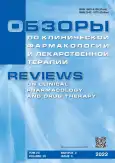Моделирование женского гипогонадизма путем ишемизации яичника и его морфофункциональное обоснование
- Авторы: Маградзе Р.Н.1, Лисовский А.Д.1, Лисовский Д.А.1, Попковский Н.А.1,2, Бобков П.С.1,2, Байрамов А.А.1, Дробленков А.В.1,2
-
Учреждения:
- Институт экспериментальной медицины
- Санкт-Петербургский медико-социальный институт
- Выпуск: Том 20, № 3 (2022)
- Страницы: 289-295
- Раздел: Оригинальные исследования
- Статья получена: 09.11.2022
- Статья одобрена: 09.11.2022
- Статья опубликована: 09.11.2022
- URL: https://journals.eco-vector.com/RCF/article/view/112456
- DOI: https://doi.org/10.17816/RCF203289-295
- ID: 112456
Цитировать
Полный текст
Аннотация
Настоящее исследование посвящено морфофункциональному обоснованию модели женского гипогонадизма, важному для последующей оценки эффективности его целенаправленной фармакологической коррекции, а также выяснению устойчивости эндокринных клеток яичника к повреждению в результате переживания однократного острого ишемического воздействия. У трех групп взрослых самок крыс под наркозом лигировали артерию правого и левого яичника на 30, 45 и 60 мин (по 4 крысы в каждой группе). После операции рану зашивали. Контролем служили ложнооперированные крысы (4 особи). Результаты анализировали через 7 сут. Содержание в крови половых стероидных гормонов (17β-эстрадиола, прогестерона) и гонадотропинов (фолликулостимулирующий гормон и лютеинизирующий гормон) определяли методом твердофазного иммуноферментного анализа. В меридиональных гистологических срезах зрелого третичного фолликула и желтого тела правого и левого яичников после обзорного окрашивания подсчитывали число и процент жизнеспособных и погибших эндокриноцитов, определяли площадь жизнеспособных эндокринных клеток. Достоверность различий медианы, верхнего и нижнего квартилей сравниваемых параметров определяли, используя непараметрический критерий Манна – Уитни. Установлено, что однократная острая ишемия яичников индуцирует массовую гибель и дегенеративные изменения значительной части жизнеспособных эндокринных клеток зрелого третичного фолликула и желтого тела, наиболее выраженные при одночасовой билатеральной окклюзии сосудов яичников. Данные количественные и структурные изменения интерстициальных эндокринных клеток и лютеоцитов яичника обусловливают значительное снижение выработки половых стероидов, которые, в свою очередь, вызывают гиперпродукцию соответствующих гипофизарных тропинов. Морфологические изменения обоих типов эндокринных клеток яичников в данной модели острой однократной ишемии яичников являются высокочувствительными; использование же ряда морфометрических параметров эндокриноцитов в комплексе с установлением концентрации периферических и регуляторных гомонов позволит применять эту модель для оценки эффективности коррекции женского гипогонадизма различными фармакологическими препаратами.
Полный текст
Об авторах
Роман Нодарович Маградзе
Институт экспериментальной медицины
Автор, ответственный за переписку.
Email: droblenkov_a@mail.ru
аспирант отдела нейрофармакологии им. С.В. Аничкова
Россия, 199376, Санкт-Петербург, ул. Академика Павлова, д. 12Анатолий Дмитриевич Лисовский
Институт экспериментальной медицины
Email: lisovsky.t@mail.ru
нейрофармакологии им. С.В. Аничкова
Россия, 199376, Санкт-Петербург, ул. Академика Павлова, д. 12Дмитрий Александрович Лисовский
Институт экспериментальной медицины
Email: lisovsky.t@mail.ru
канд. мед. наук, докторант отдела нейрофармакологии им. С.В. Аничкова
Россия, 199376, Санкт-Петербург, ул. Академика Павлова, д. 12Никита А. Попковский
Институт экспериментальной медицины; Санкт-Петербургский медико-социальный институт
Email: popkovskij.nikita@yandex.ru
аспирант отдела нейрофармакологии им. С.В. Аничкова
Россия, 199376, Санкт-Петербург, ул. Академика Павлова, д. 12; Санкт-ПетербургПавел Сергеевич Бобков
Институт экспериментальной медицины; Санкт-Петербургский медико-социальный институт
Email: bobkov_pl@mail.ru
ORCID iD: 0000-0003-4858-6170
канд. мед. наук, ст. научн. сотр. отдела нейрофармакологии им. С.В. Аничкова
Россия, 199376, Санкт-Петербург, ул. Академика Павлова, д. 12; Санкт-ПетербургАлекбер Азизович Байрамов
Институт экспериментальной медицины
Email: droblenkov_a@mail.ru
ORCID iD: 0000-0002-0673-8722
д-р мед. наук, вед. научн. сотр. отдела нейрофармакологии им. С.В. Аничкова
Россия, 199376, Санкт-Петербург, ул. Академика Павлова, д. 12Андрей Всеволодович Дробленков
Институт экспериментальной медицины; Санкт-Петербургский медико-социальный институт
Email: droblenkov_a@mail.ru
ORCID iD: 0000-0001-5155-1484
д-р мед. наук, профессор, вед. научн. сотр. отдела нейрофармакологии им. С.В. Аничкова
Россия, 199376, Санкт-Петербург, ул. Академика Павлова, д. 12; Санкт-ПетербургСписок литературы
- Даржаев З.Ю., Аталян А.В., Ринчиндоржиева М.П., Сутурина Л.В. Частота бесплодия в браке среди городского и сельского населения Республики Бурятия: результаты популяционного исследования // Фундаментальная и клиническая медицина. 2017. Т. 2, № 4. С. 14–21.
- Филиппов О.С. Причины и факторы развития бесплодия среди населения Сибири // Эпидемиология и инфекционные болезни. 2002. № 3. C. 47.
- Ohtaki T., Shintani Y., Honda S., et al. Metastasis suppressor gene KiSS-1 encodes peptide ligand of a G-protein-coupled receptor // Nature. 2001. Vol. 411. P. 613–617.
- de Roux N, Genin E, Carel JC, et al. Hypogonadotropic hypogonadism due to loss of function of the KiSS1-derived peptide receptor GPR54 // Proc Natl Acad Sci USA. 2003. Vol. 100, No. 19. P. 10972–10976. doi: 10.1073/pnas.1834399100
- Seminara S.B., Messager S., Chatzidaki E.E., et al. The GPR54 gene as a regulator of puberty // N Engl J Med. 2003. Vol. 349, No. 17. P. 1614–1627. doi: 10.1056/NEJMoa035322.
- Хабриев К.У. Руководство по экспериментальному (доклиническому) изучению новых фармакологических веществ. Москва: Медицина, 2005. 832 с.
- Freeman M.E. The ovarian cycle of the rat. In: Physiology of reproduct. Knobil E., Nail J., eds. New York: Raven Press Ltd, 1988. P. 1893–1928.
- Laws S.C., Beggs J.M., Webster J.C., Miller W.L. Inhibin increases and progesterone decrease receptor for gonadotropin-releasing hormone in ovine pituitary cultures // Endocrinology. 1990. Vol. 127. P. 373–380. doi: 10.1210/endo-127-1-373
- Quinones-Jenab V., Jenab S., Ogawa S., et al. Estrogen regulation of gonadotropin-releasing hormone receptor messenger RNA in female rat pituitary tissue // Mol Brain Res. 1996. Vol. 38. P. 243–250.







